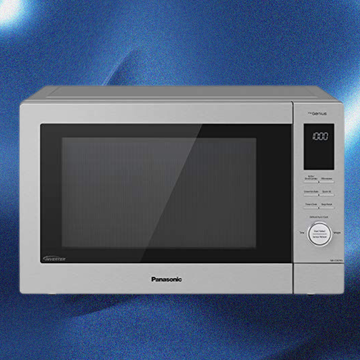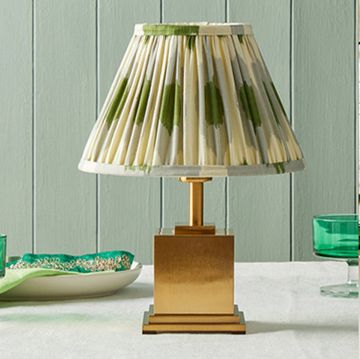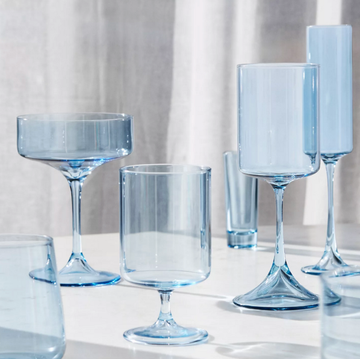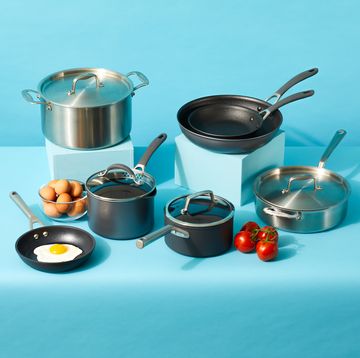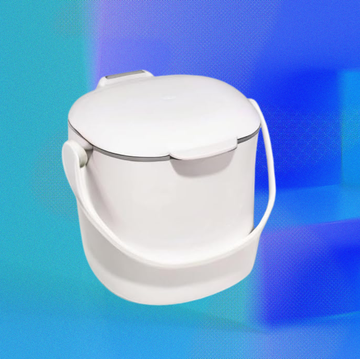Most of us spend a lot of time in the kitchen, so it can easily turn into a catchall. Chances there are junk drawers filled with random papers, countertops cluttered with spices, plus that overfilled cabinet you have to quickly close before containers come crashing out. "Unlike other areas of the home, items in the kitchen tend to rotate in and out on a regular basis," says Ann Lightfoot, founding partner of Done & Done Home. That's why it's so important to regularly take stock of what you own — purging rarely used things and tossing items that are hiding in the back of kitchen cabinets or the pantry.
Kitchen clutter can put a damper on your daily routine, making it more difficult to cook, clean or host guests. Not to mention, the daily frustration that comes along with crowded cabinets and drawers. There are likely plenty of items in your kitchen that you don't need — or worse, are full of harmful bacteria.
Below, professional organizers share their advice for clearing clutter in the kitchen once and for all, starting with the things you should get rid of right away.
❌ Worn-out cutting boards
Plastic cutting boards wear out over time, leading to grooves that can be difficult to clean. "Cutting boards that are heavily scratched can trap bacteria," says Shira Gill, organizing expert and author of Minimalista. While wooden cutting boards also develop grooves, they can be sanded and treated with oil, making them a more sustainable option.
❌ Small specialty appliances
Really think about how often you actually use your ice cream maker, panini press, holiday-themed waffle maker or shaved ice machine. "Space is a huge factor when deciding whether to hold onto small specialty appliances," says Ashley Murphy, co-founder of NEAT Method. "If space is limited, we recommend only keeping the small appliances you're using regularly. Items used only once a year just aren't worth the clutter you have to see daily."
❌ User manuals
Your new dishwasher, refrigerator or toaster oven came with a lengthy user manual. Instead of tossing it in a junk drawer, consider placing it directly in the trash. "They can all be found online," says Murphy. "The next time you need help resetting your microwave, pull up the instructions online. In many cases, you'll even find an easy-to-follow how-to video."
❌ Chipped or cracked dishes
If a few dishes in your set have minor chips or cracks, it might not seem like a big deal to hold onto them. In reality, "small cracks in ceramic can harbor bacteria," says Gill. Not to mention, sharp chips are an eyesore and might cut your hands or mouth as you eat.
❌ Stained plastic containers
If some of your food storage containers are starting to look worn and stained, it's time to let them go. (Over time, plastic can pick up on smells and flavors that might affect the taste of your drinks and food.) "I personally suggest getting rid of any plastic that's not BPA-free," says Natalie Schrier, founder of Cut the Clutter. Consider swapping your dingy plastic containers for glass ones, which are better able to resist staining and scratching (plus they're more commonly dishwasher-safe).
❌ Expired foods
"You might be surprised how much expired food is hiding away in the corners of your pantry and fridge," says Murphy. "Take a minute to scan expiration dates and toss anything that's really past its prime." While it's true that sell-by dates are often just recommendations (and the state of California recently banned them), items like breadcrumbs, brown rice and whole wheat flour have a shorter shelf life than you might expect. Also, don't forget that spices lose their potency and flavor over time.
❌ Kitchen sponges
Try to remember the last time you replaced your kitchen sponge — was it within the last couple of weeks? You can sanitize your sponge to prolong its life. But as soon as it's looking messy and worn (between two to three weeks), start using a new one. "Sponges can be breeding grounds for bacteria and should be replaced regularly," says Gill, who also suggests switching to compostable sponges or washable cloths to reduce waste.
❌ Old dishtowels and table linens
Obviously, you don't need to throw away all of your dishtowels and table linens, but these tend to accumulate and it's important to purge them from time to time. "Get rid of any linens that are stained or ripped," plus any you rarely use, says Schrier.
❌ Scratched nonstick pans
While cooking with Teflon-coated cookware has been considered safe when used properly and not overheated, there is growing concern about the prevalence of PFOA and other PFAS in our environment and how they can affect us. If that's a concern to you, you may want to replace your old, scratched nonstick cookware. "You can replace these pans with options like cast iron, stainless steel or ceramic-coated cookware," suggests Gill. Certain cookware brands (like Made in Cookware) and community recycling centers will accept used cookware, so you don't have to toss pans in the trash.
❌ Reusable water bottles
Take stock of how many reusable water bottles you have stashed in the kitchen. Realistically, you only need one or two per person in the household. Luckily, many water bottles can be recycled.
How to Responsibly Dispose of Clutter
Just because you no longer need something, doesn't mean it's trash. If your kitchen items (like small appliances or reusable water bottles) are in good condition, donate them to secondhand stores like Goodwill and The Salvation Army, or even consider listing them on websites like Facebook Marketplace. For broken, stained or worn-out kitchen items, research recycling programs in your area before throwing items in the trash. Hint: Some municipalities accept broken microwaves and metal pots or pans as scrap metal.
Alyssa Gautieri (she/her) is the associate lifestyle editor for Good Housekeeping, where she covers all things home and interior design. Prior to joining GH in 2022, she wrote for publications including ELLE Decor, Chairish, BobVila.com, Unique Homes Magazine and LODGING Magazine, in addition to crafting product copy for home brands like BrylaneHome and VIGO Industries.





